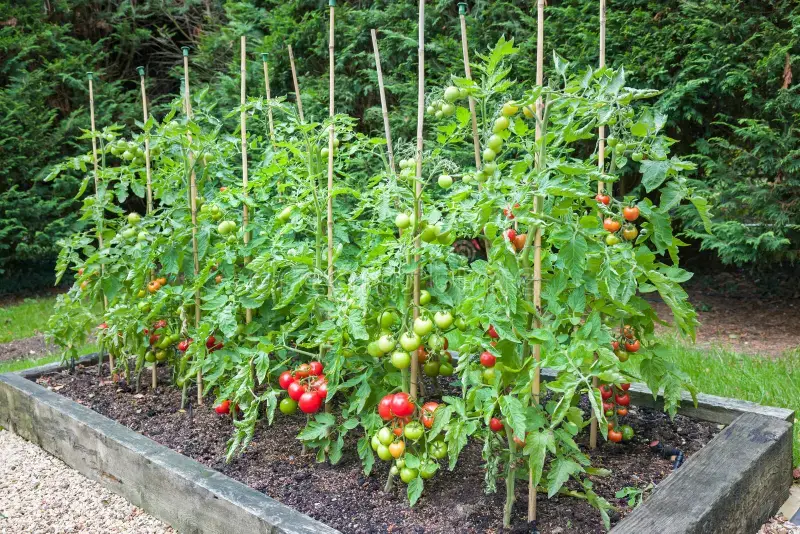Are your tomato plants feeling down? Maybe they seem stunted, yellowed, or lack vigor. It’s frustrating to put in the effort and not see the results you hoped for. But don't lose heart! This guide will help you understand how to revitalize your struggling tomato plants. With the right care, you can have lush, productive plants in no time. 
Understanding Your Tomato Plant's Needs
Tomatoes thrive in warm, sunny environments. They love consistent watering and rich, nutrient-dense soil. When conditions aren’t ideal—too much rain, excessive heat, or poor soil—it can hinder their growth. Recognizing these needs early is crucial for a successful harvest. If your tomato plants aren’t growing well, it’s time to evaluate their conditions. Are they receiving adequate sunlight? Is the soil healthy? Address these issues first, and then focus on boosting their nutrient intake.
Essential Nutrients for Tomato Plants
To ensure your tomato plants grow quickly and healthily, they need essential nutrients. The key components include nitrogen, phosphorus, and potassium. Each plays a unique role:
- Nitrogen: Promotes leafy growth.
- Phosphorus: Enhances root development and flowering.
- Potassium: Helps in fruit development and disease resistance.
When a plant lacks any of these, it can show signs of stress—such as yellow leaves, stunted growth, or poor fruiting.
How to Fix Struggling Tomato Plants – Fast
To transform your struggling plants, provide them with a powerful dose of nutrients. Fertilizers can be applied bi-weekly to quickly revive your tomatoes. They need nutrients, especially if they’re young and vulnerable. Here’s how to deliver that boost effectively.
1. Mulch for Success
Mulching your tomato plants helps retain moisture and suppress weeds. It creates a stable environment. If you haven’t mulched yet, now is the time. Effective mulching involves:
- Straw
- Shredded leaves
- Grass clippings
A 4–6 inch layer is optimal. Additionally, applying compost under the mulch will increase nutrient availability. Compost acts as a slow-release fertilizer.
How to Apply Mulch Correctly
- Step 1: Clear the area around the base of your tomato plants.
- Step 2: Apply a layer of compost around the stem.
- Step 3: Add the desired organic material for the mulch layer.
This method shields the plants' roots and provides a nutrient boost every time you water or it rains.
Using Liquid Fertilizer
Liquid fertilizers are one of the quickest ways to deliver nutrients. They work through two methods:
- Root absorption: Nutrients soak into the soil for the roots to absorb.
- Foliar absorption: Leaves can also absorb nutrients directly.
When choosing a liquid fertilizer, look for one high in phosphorus and potassium. These will help improve the overall health of your plants and set them up for better fruiting.
Application Tips for Liquid Fertilizer
Start by diluting the fertilizer to half the strength. Apply it every five to seven days for three applications. The best times to apply are in the early morning or late evening. This prevents leaf burn and maximizes nutrient absorption.
Benefits of Good Practices
Implementing these practices results in healthier tomato plants. Good mulching, alongside the right nutrition, helps create a nurturing environment. You’ll likely see:
- Faster growth
- More blooms
- Greater resistance to diseases
Let’s summarize the practical benefits with a simple table.
| Feature | Benefit |
|---|---|
| Healthy soil | More nutrients available for the plant. |
| Proper mulching | Moisture retention and weed suppression. |
| Liquid fertilizer | Quick nutrient uptake enhances growth speed. |
Pros and Cons of Each Method
Mulching
| Pros | Cons |
|---|---|
| Prevents weeds | Requires initial setup time |
| Retains moisture | Can attract pests in some cases |
| Improves soil quality | Needs periodic replacement |
| Reduces temperature fluctuations |
Liquid Fertilizer
| Pros | Cons |
|---|---|
| Quick nutrient absorption | Risk of over-fertilization |
| Supports rapid growth | Can be costly |
| Enhances flowering | Needs careful application |
| Flexible in use | Requires regular application |
Frequently Asked Questions (FAQ)
1. How often should I water my tomato plants?
Water your tomato plants deeply once a week, or more often in extreme heat. Soil should stay moist but not soggy.
2. Can I use regular garden soil for tomatoes?
It's best to use high-quality potting soil that is well-draining and rich in organic matter.
3. What should I do if my tomatoes blossom but fail to set fruit?
Ensure your plants are well-watered and correctly fertilized. High temperatures can also lead to blossom drop.
4. When is the best time to fertilize tomatoes?
Fertilize during the early growing season and again when the plants begin to produce fruit.
Conclusion
Reviving struggling tomato plants is achievable with the right practices. Focus on proper mulching and nutrient delivery. Easy steps, like liquid fertilizers and organic compost, can lead to remarkable improvements. Your effort will pay off with bountiful, healthy tomatoes. Embrace the gardening journey, and may your garden flourish beautifully this season!

